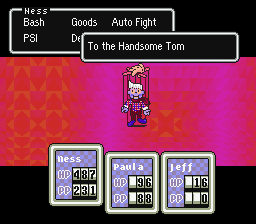JRPG
Japanese Role-Playing Games (commonly known as JRPG) are not a genre of games. JRPG is an umbrella term that describes RPGs have distinct features. JRPGs are typically made by Japanese developers but are not exclusively made by them. JRPGs do not describe specifically what game mechanics or narrative elements a game has because all the RPG games that fall under the JRPG label are different types of RPGs. The term JRPG however does share similar aspects to the term console RPG.
History
The development of the video game RPG genre is heavily influenced by table top RPGs such as Dungeons and Dragons. Before the widespread of the Famicom or other gaming consoles, computer gaming was quite popular in Japan. During the 1980s, Japanese RPGs began appearing in the market. The Japanese company Koei developed several games for the NEC PC-8801 such as The Dragon and Princess (one of the first Japanese RPGs), Seduction of the Condominium Wife (which has eroge elements), and Sword & Sorcery. Koei continued to produce other games such as Secrets of King Kufu (introduced the dungeon crawler genre) and Bokosuka Wars ( contained Tactical RPG elements). In addition, Nihon Falcom, another Japanese video game company, made a game called Dragon Slayer which featured a hack and slash dungeon crawler gameplay and is considered to be the first Action-RPG[3] .
In 1985, Yuji Hori, a Japanese game designer, created a game called Dragon's Quest which took bits from various RPGs such as Wizardry, Ultima, and Black Onyx. The revolutionary thing that Dragon's Quest did was it made the RPG genre more accessible to gamers. Dragon's Quest is known as a light RPG because it does not require the player to draw his or her own maps, memorize specific names of spells or commands. Dragon's Quest also simplified stats by implementing HP, MP, EXP, and levels rather than complex systems seen in previous RPGs. Dragon's Quest did not require the player to learn tons of complicated rules but rather offered an intriguing story with intuitive gameplay.
Aesthetics
When RPGs began to gain popularity, hardware limitations restricted games to have 8-bit graphics. However, as PCs and console hardware became more advanced, the graphics in RPGs changes as well.
One element that is noticeable when looking at Western RPGs and JRPGs is the art style/ graphics. JRPGs usually opt for a Japanese anime look while Western RPGs lean more towards a realistic look[4].
Game Mechanics
Narrative
JRPGs usually focus more on story than gameplay. For that reason, a lot of JRPGs tend to have a linear storyline and not much feel for an open world like Western-RPGs such as Fallout or Skyrim. The characters in JRPGs are pre-made characters and customization is not as vast as in Western-RPGs.
Examples of games known as JRPGs
Final Fantasy
Mario RPG
Pokemon
Small List of Most Notable JRPG titles


- Pokemon
- Final Fantasy Series
- Kingdom Hearts (Action-RPG)
- Chrono Series
- Tales Series
- Secret of Mana (Action-RPG)
- Mother Series (Earthbound)
- Super Mario RPG: Legend of the Seven Stars
- Persona Series
- Dragon Quest Series